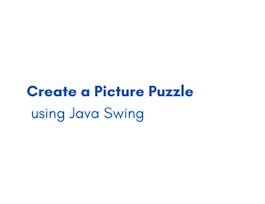In this course, you’ll be learning various supervised ML algorithms and prediction tasks applied to different data. You’ll learn when to use which model and why, and how to improve the model performances. We will cover models such as linear and logistic regression, KNN, Decision trees and ensembling methods such as Random Forest and Boosting, kernel methods such as SVM.


Introduction to Machine Learning: Supervised Learning
This course is part of Machine Learning: Theory and Hands-on Practice with Python Specialization
Taught in English
Some content may not be translated

Instructor: Geena Kim
12,079 already enrolled
Included with 
Course
(45 reviews)
Recommended experience
What you'll learn
Use modern machine learning tools and python libraries.
Compare logistic regression’s strengths and weaknesses.
Explain how to deal with linearly-inseparable data.
Explain what decision tree is & how it splits nodes.
Skills you'll gain
Details to know

Add to your LinkedIn profile
9 quizzes
Course
(45 reviews)
Recommended experience
See how employees at top companies are mastering in-demand skills

Build your subject-matter expertise
- Learn new concepts from industry experts
- Gain a foundational understanding of a subject or tool
- Develop job-relevant skills with hands-on projects
- Earn a shareable career certificate


Earn a career certificate
Add this credential to your LinkedIn profile, resume, or CV
Share it on social media and in your performance review

There are 6 modules in this course
This week, we will build our supervised machine learning foundation. Data cleaning and EDA might not seem glamorous, but the process is vital for guiding your real-world data projects. The chances are that you have heard of linear regression before. With the buzz around machine learning, perhaps it seems surprising that we are starting with such a standard statistical technique. In "How Not to Be Wrong: The Power of Mathematical Thinking", Jordan Ellenberg refers to linear regression as "the statistical technique that is to social science as the screwdriver is to home repair. It's the one tool you're pretty much going to use, whatever the task" (51). Linear regression is an excellent starting place for solving problems with a continuous outcome. Hopefully, this week will help you appreciate how much you can accomplish with a simple model like this.
What's included
5 videos12 readings4 quizzes1 programming assignment1 peer review2 discussion prompts
This week we are building on last week's foundation and working with more complex linear regression models. After this week, you will be able to create linear models with several explanatory and categorical variables. Mathematically and syntactically, multiple linear regression models are a natural extension of the simpler linear regression models we learned last week. One of the differences that we must keep in mind this week is that our data space is now 3D instead of 2D. The difference between 3D and 2D has implications when considering how to do things like creating meaningful visualizations. It is essential to understand how to interpret coefficients. Machine learning involves strategically iterating and improving upon a model. In this week's lab and Peer Review, you will identify weaknesses with linear regression models and strategically improve on them. Hopefully, as you progress through this course specialization, you will get better and better at this iterative process.
What's included
4 videos5 readings1 quiz1 programming assignment1 peer review
Even though the name logistic regression might suggest otherwise, we will be shifting our attention from regression tasks to classification tasks this week. Logistic regression is a particular case of a generalized linear model. Like linear regression, logistic regression is a widely used statistical tool and one of the foundational tools for your data science toolkit. There are many real-world applications for classification tasks, including the financial and biomedical realms. In this week's lab, you will see how this classic algorithm will help you predict whether a biopsy slide from the famous Wisconsin Breast Cancer dataset shows a benign or malignant mass. We also advise starting the final project that you will turn in Week 7 of the course this week. This week, find a project dataset, start performing EDA and define your problem. Use the project rubric as a guide, and don't be afraid to look at a few datasets until you find one well-suited to the project.
What's included
4 videos6 readings1 quiz1 programming assignment1 peer review
This week we will learn about non-parametric models. k-Nearest Neighbors makes sense on an intuitive level. Decision trees are a supervised learning model that can be used for either regression or classification tasks. In Module 2, we learned about the bias-variance tradeoff, and we've kept that tradeoff in mind as we've moved through the course. Highly flexible tree models have the benefit that they can capture complex, non-linear relationships. However, they are prone to overfitting. This week and next, we will explore strategies like pruning to avoid overfitting with tree-based models. In this week's lab, you will make a KNN classifier for the famous MNIST dataset and then build a spam classifier using a decision tree model. This week we will once again appreciate the power of simple, understandable models. Keep going with your final project. Once you've finalized your dataset and EDA, start on the initial approach for your main supervised learning task. Review the course material, read research papers, look at GitHub repositories and Medium articles to understand your topic and plan your approach.
What's included
5 videos6 readings1 quiz1 programming assignment1 peer review
Last week, we learned about tree models. Despite all of the benefits of tree models, they had some weaknesses that were difficult to overcome. This week we will learn about ensembling methods to overcome tree models' tendency to overfit. The winner utilizes an ensemble approach in many machine learning competitions, aggregating predictions from multiple tree models. This week you will start by learning about random forests and bagging, a technique that involves training the same algorithm with different subset samples of the training data. Then you will learn about boosting, an ensemble method where models train sequentially. You will learn about two essential boosting algorithms: AdaBoost and Gradient Boosting. This week, work on the main analysis of your final project. Iterate and improve on your models. Compare different models. Perform hyperparameter optimization. Sometimes this part of a machine learning project can feel tedious, but hopefully, it will be rewarding to see your performance improve.
What's included
4 videos5 readings1 quiz1 programming assignment1 peer review
This week we will be exploring another advanced topic, Support Vector Machines. Don't let the name intimidate you. This week, we will work through understanding this powerful supervised learning model. Hopefully, you will build an intuitive understanding of essential concepts like the difference between hard and soft margins, the kernel trick, and hyperparameter tuning. Next week, you will submit the three deliverables for your final project: the report, video presentation, and a link to your GitHub repository. Suppose you aim to finish iterating on your models, hyperparameter optimization, etc., this week. In that case, next week, you can polish your report, make sure your GitHub repository is ready for Peer Review, and give an excellent presentation of your work.
What's included
4 videos4 readings1 quiz1 programming assignment1 peer review
Instructor

Offered by
Recommended if you're interested in Machine Learning

University of Colorado Boulder

University of Colorado Boulder

University of Colorado Boulder

Coursera Project Network
Get a head start on your degree
This course is part of the following degree programs offered by University of Colorado Boulder. If you are admitted and enroll, your coursework can count toward your degree learning and your progress can transfer with you.
Why people choose Coursera for their career




Learner reviews
Showing 3 of 45
45 reviews
- 5 stars
36.95%
- 4 stars
21.73%
- 3 stars
8.69%
- 2 stars
8.69%
- 1 star
23.91%
New to Machine Learning? Start here.

Open new doors with Coursera Plus
Unlimited access to 7,000+ world-class courses, hands-on projects, and job-ready certificate programs - all included in your subscription
Advance your career with an online degree
Earn a degree from world-class universities - 100% online
Join over 3,400 global companies that choose Coursera for Business
Upskill your employees to excel in the digital economy
Frequently asked questions
A cross-listed course is offered under two or more CU Boulder degree programs on Coursera. For example, Dynamic Programming, Greedy Algorithms is offered as both CSCA 5414 for the MS-CS and DTSA 5503 for the MS-DS.
· You may not earn credit for more than one version of a cross-listed course.
· You can identify cross-listed courses by checking your program’s student handbook.
· Your transcript will be affected. Cross-listed courses are considered equivalent when evaluating graduation requirements. However, we encourage you to take your program's versions of cross-listed courses (when available) to ensure your CU transcript reflects the substantial amount of coursework you are completing directly in your home department. Any courses you complete from another program will appear on your CU transcript with that program’s course prefix (e.g., DTSA vs. CSCA).
· Programs may have different minimum grade requirements for admission and graduation. For example, the MS-DS requires a C or better on all courses for graduation (and a 3.0 pathway GPA for admission), whereas the MS-CS requires a B or better on all breadth courses and a C or better on all elective courses for graduation (and a B or better on each pathway course for admission). All programs require students to maintain a 3.0 cumulative GPA for admission and graduation.
Yes. Cross-listed courses are considered equivalent when evaluating graduation requirements. You can identify cross-listed courses by checking your program’s student handbook.
You may upgrade and pay tuition during any open enrollment period to earn graduate-level CU Boulder credit for << this course/ courses in this specialization>>. Because << this course is / these courses are >> cross listed in both the MS in Computer Science and the MS in Data Science programs, you will need to determine which program you would like to earn the credit from before you upgrade.
MS in Data Science (MS-DS) Credit: To upgrade to the for-credit data science (DTSA) version of << this course / these courses >>, use the MS-DS enrollment form. See How It Works.
MS in Computer Science (MS-CS) Credit: To upgrade to the for-credit computer science (CSCA) version of << this course / these courses >>, use the MS-CS enrollment form. See How It Works.
If you are unsure of which program is the best fit for you, review the MS-CS and MS-DS program websites, and then contact datascience@colorado.edu or mscscoursera-info@colorado.edu if you still have questions.

